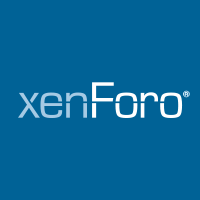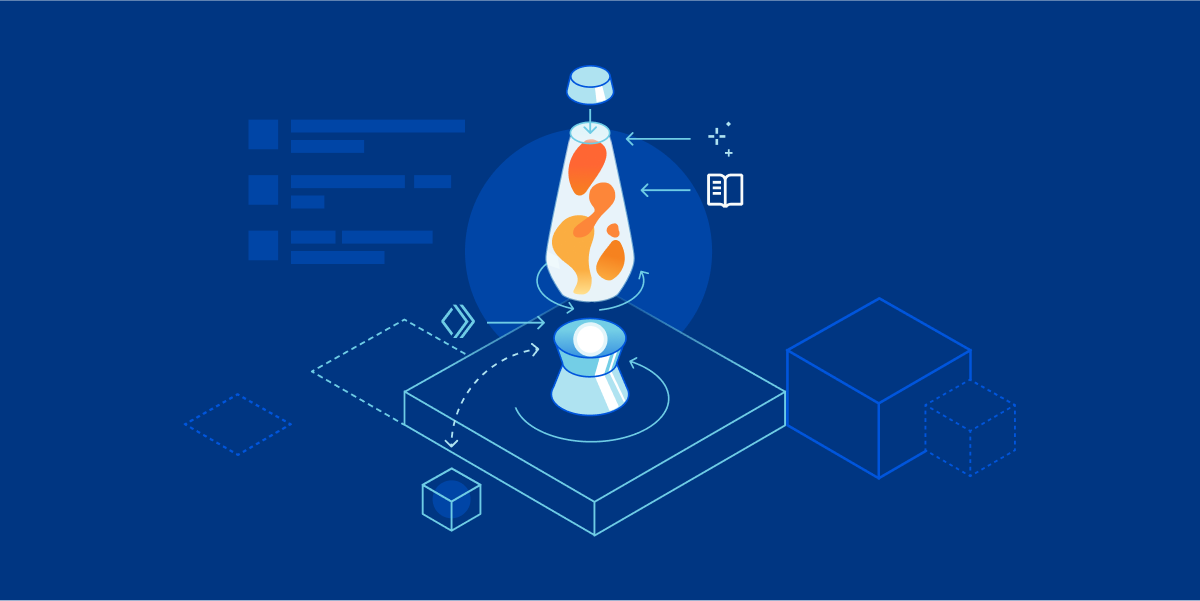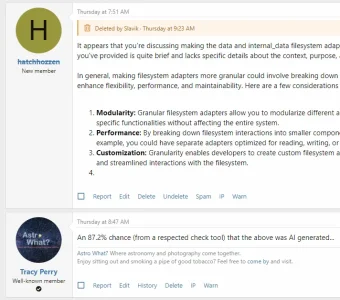digitalpoint
Well-known member
The problem:
You want to store attachments and avatars in a non-local filesystem.
The solution:
There are currently 3 locations you can override filesystem adaptors:
The issue:
Overwriting the data and internal-data filesystem is (for the most part) an "all or nothing" thing. So when I really just wanted to store
Examples of why you wouldn't want to store some of these items in the cloud:

 xenforo.com
xenforo.com
I don't think it would be terribly hard to do and also maintain backward compatibility (see my post in the above thread).
You want to store attachments and avatars in a non-local filesystem.
The solution:
There are currently 3 locations you can override filesystem adaptors:
data, internal-data and code-cache. So to solve "the problem" you can override data and internal-data to use something like AWS S3. So far, so good...The issue:
Overwriting the data and internal-data filesystem is (for the most part) an "all or nothing" thing. So when I really just wanted to store
internal_data/attachments and data/avatars in the cloud, now I'm forced to also store a whole slew of other things in the cloud:| Where | What |
|---|---|
| data/attachments | Attachment thumbnails |
| data/audio | User uploaded audio |
| data/imported_reactions | Reactions imported from other forum software |
| data/profile_banners | User uploaded banners |
| data/styles | Styles imported from an archive (why is this in data rather than internal_data?) |
| data/video | User uploaded video |
| internal_data/addon_batch | Data only used when installing add-ons from an archive |
| internal_data/file_check | Info about nightly file checks |
| internal_data/image_cache | Images from image proxy |
| internal_data/imported_xml | Imported smiles |
| internal_data/keys | Email DKIM key |
| internal_data/oembed_cache | Media embeds |
| internal_data/sitemaps | Sitemaps for search engines |
Examples of why you wouldn't want to store some of these items in the cloud:
- Making cloud API calls on the backend every time a user views a reaction on a post (or is given an opportunity to use that reaction) just to get the reaction image. Not efficient.
- Reading and writing what ultimately is temporary data to the cloud when you install an add-on. Not efficient.
- Reading proxied images via cloud API calls every time someone views a proxied image (at least partially) defeats the purpose of the image proxy.
- Making cloud API calls to read what is a singular DKIM key every time an email is sent? This one is SO bad. We've now slowed down outgoing mails and added an actual cost to send emails (cloud API calls aren't terribly expensive, but if you are sending a ton of emails from XenForo, which large sites will be doing, 10,000,000 individually cheap emails is a real cost). Real-world example: Let's say the API call only takes 1/4 of a second to fully complete. You send a mass email to 10,000 users. Doing the same API call once for each email (to get the same key each time), and you just added 42 minutes of extra time to send those 10,000 emails on top of paying for each API call.

Implemented - DKIM: Change location of key material
Currently, the private key is stored unarmored in internal-data://keys, I am not sure if I'd be too happy to have a private key stored in an (unstrusted) public cloud object storage. Furthermore, the key could be accessed pretty frequently (on busy forums) - in which case it would always be...
I don't think it would be terribly hard to do and also maintain backward compatibility (see my post in the above thread).
Upvote
16

